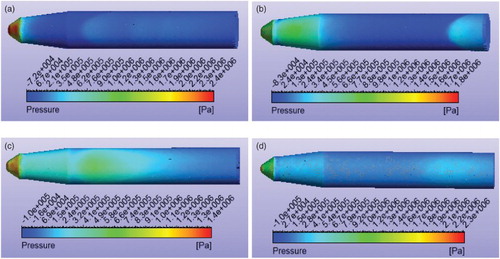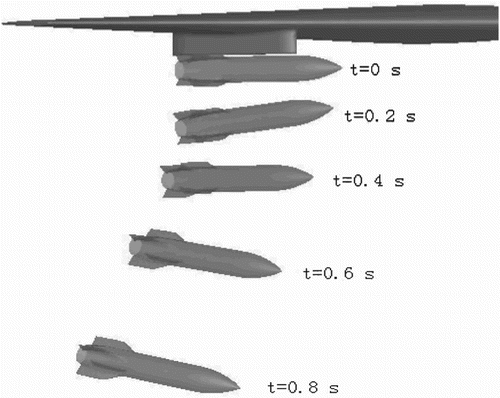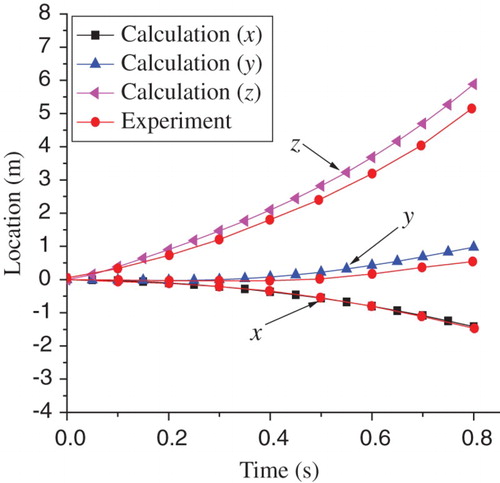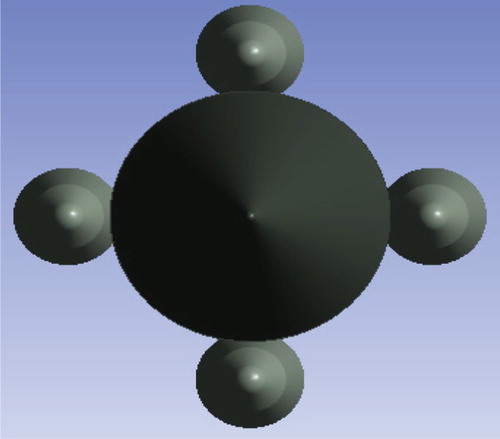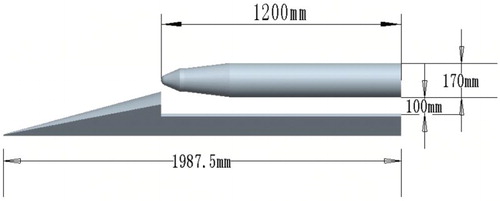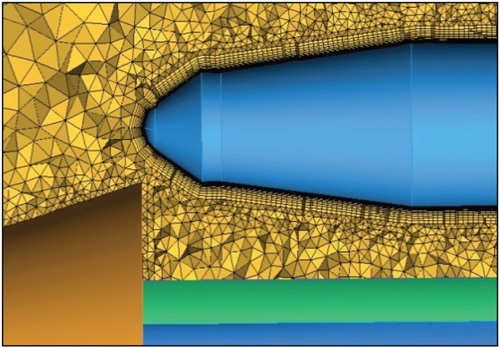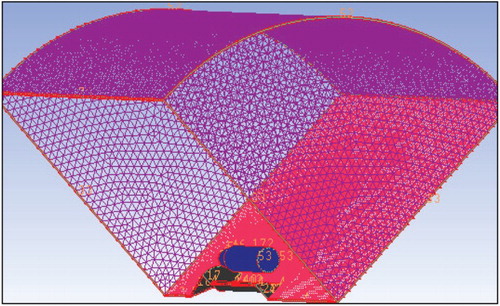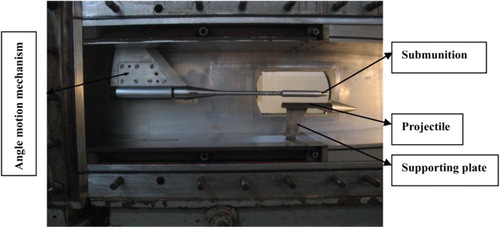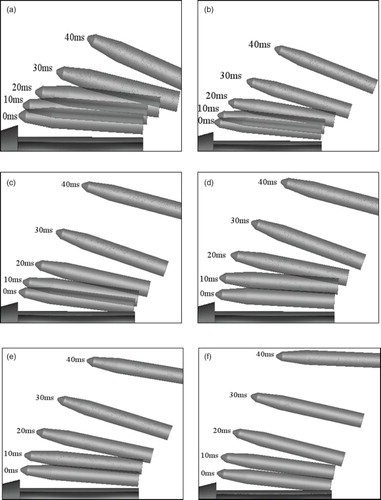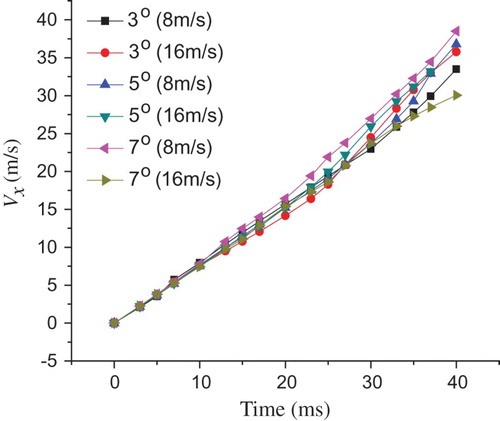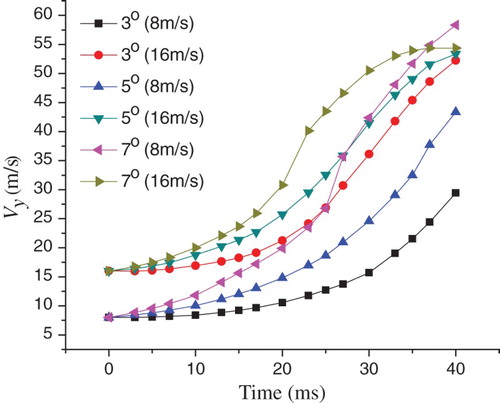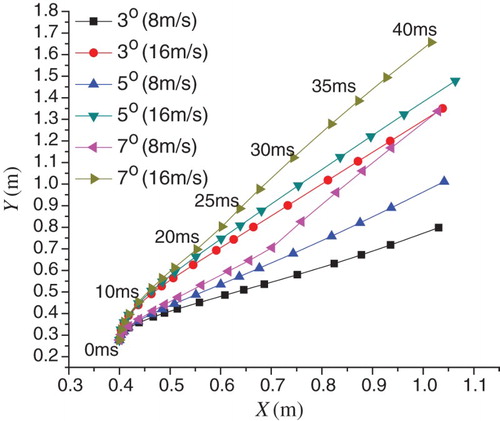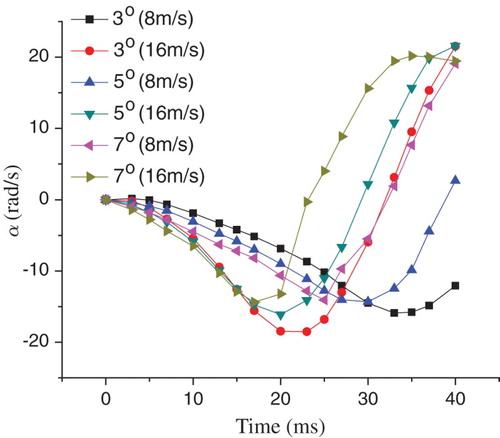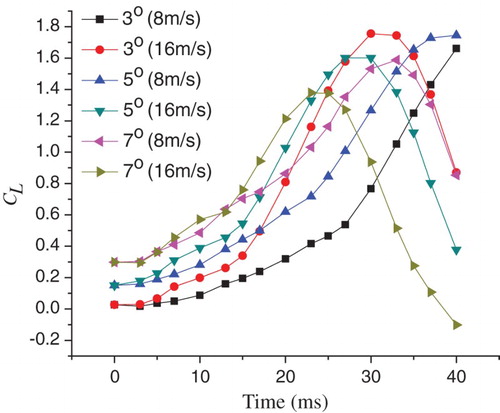Figures & data
Table 1. Computational parameters.
Figure 4. Comparison of the angular orientation over time for the simulated and experimental results.
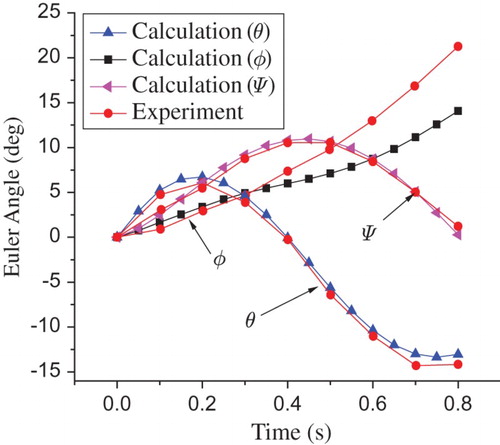
Table 2. Computational conditions.
Figure 10. Schlieren photograph of the experimental model in position 1, for Ma = 3 and y1 = l/dc = 0.8333, for (a) α = 3°, (b) α = 5°, and (c) α = 7°.

Figure 11. Schlieren photograph of the experimental model in position 2, for Ma = 3 and y2 = l/dc = 1.5201, for (a) α = 3°, (b) α = 5°, and (c) α = 7°.

Figure 12. Comparison of the drag coefficient for the simulated and experimental results under different conditions.
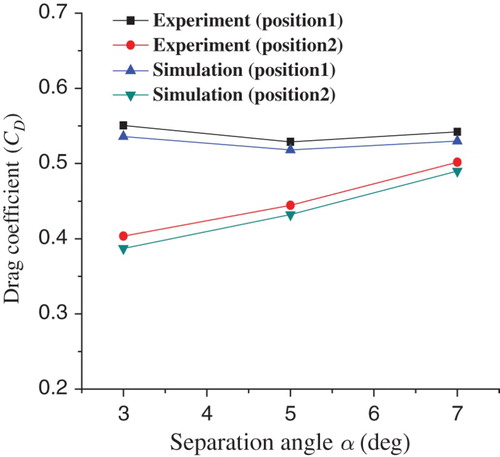
Figure 13. Comparison of the lift coefficient for the simulated and experimental results under different conditions.
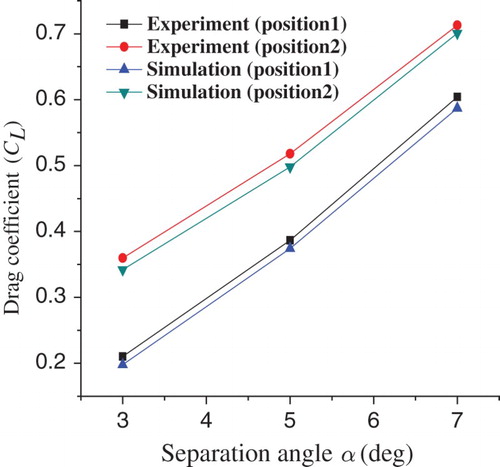
Figure 14. Comparison of the pitching moment coefficient for the simulated and experimental results under different conditions.
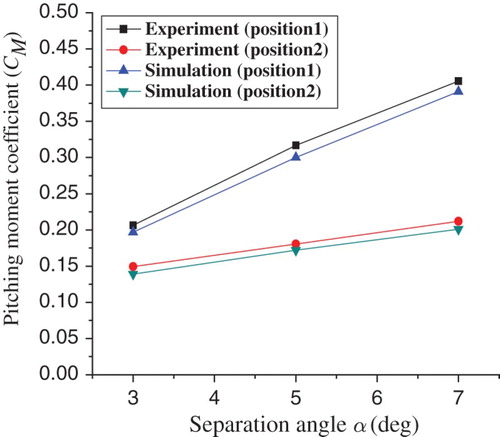
Figure 15. Pressure contours of the separation for α = 3° and v0 = 8 m/s at (a) t = 0 ms, (b) t = 10 ms, (c) t = 30 ms, and (d) t = 40 ms.
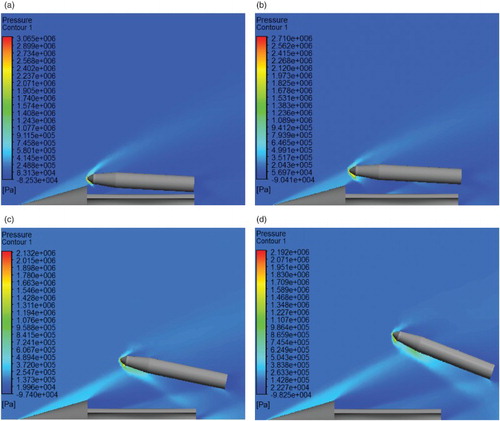
Figure 16. Pressure contours of the separation for α = 7° and v0 = 16 m/s at (a) t = 0 ms, (b) t = 10 ms, (c) t = 30 ms, and (d) t = 40 ms.
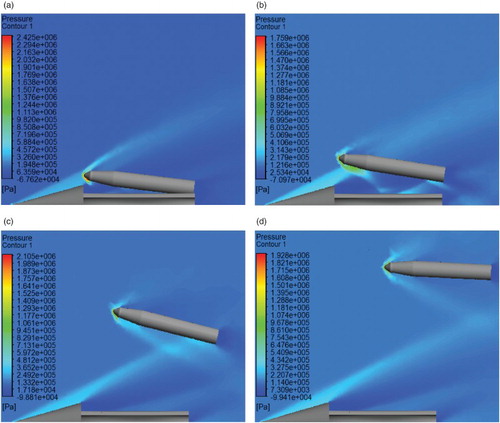
Figure 17. The process of mesh reconstruction for α = 7° and v0 = 16 m/s at (a) t = 0 ms, (b) t = 10 ms, (c) t = 20 ms, and (d) t = 30 ms.
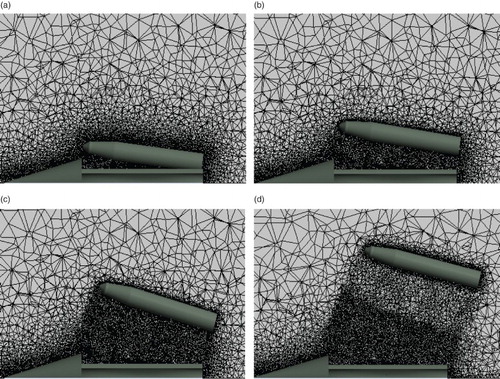
Figure 18. The surface pressure contours of the submunition for α = 3° and v0 = 8 m/s at (a) t = 0 ms, (b) t = 10 ms, (c) t = 20 ms, and (d) t = 30 ms.
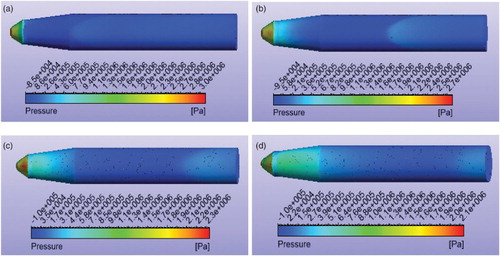
Figure 19. The surface pressure contours of the submunition for α = 7° and v0 = 16 m/s at (a) t = 0 ms, (b) t = 10 ms, (c) t = 20 ms, and (d) t = 30 ms.
